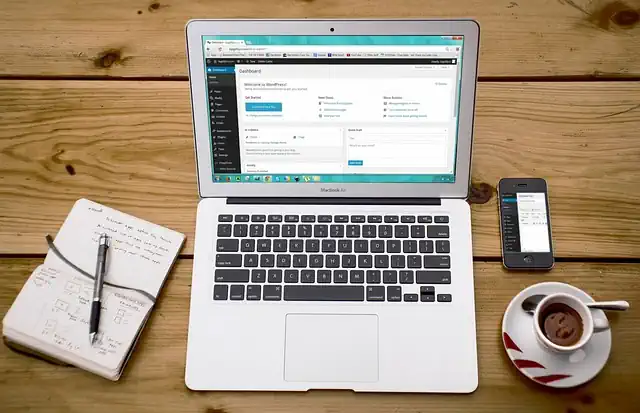How To Save Money For Buying A Car
“Smart saving tips to drive your dream car home.”
Introduction
Saving money for a car can be a daunting task, but with a little bit of planning and discipline, it is achievable. In this article, we will discuss some tips on how to save money for buying a car.
Creating a Realistic Budget for Your Car Purchase
Buying a car is a big investment, and it’s important to plan ahead to ensure that you can afford the vehicle you want. One of the most important steps in this process is creating a realistic budget for your car purchase. Here are some tips to help you get started.
First, take a look at your current expenses and income. This will give you a good idea of how much money you have available to put towards a car payment each month. Be sure to include all of your regular expenses, such as rent or mortgage payments, utilities, groceries, and any other bills you have. Subtract these expenses from your monthly income to determine how much money you have left over.
Next, consider how much you can realistically afford to spend on a car payment each month. This will depend on your income, expenses, and other financial obligations. A good rule of thumb is to aim for a car payment that is no more than 10-15% of your monthly income. For example, if you make $3,000 per month, your car payment should be no more than $450 per month.
Once you have a rough idea of how much you can afford to spend on a car payment, it’s time to start looking at the actual cost of the vehicle you want. This includes not only the purchase price, but also any taxes, fees, and other expenses associated with buying a car. Be sure to factor in the cost of insurance, gas, and maintenance as well.
If you’re not sure how much a particular car will cost, do some research online or visit a dealership to get a quote. Keep in mind that the price of a car can vary depending on the make, model, and year, as well as the location and dealership you’re buying from.
Once you have a better idea of the total cost of the car you want, you can start to adjust your budget accordingly. If the car is more expensive than you anticipated, you may need to cut back on other expenses or consider a less expensive vehicle. On the other hand, if you have more money available than you thought, you may be able to afford a nicer car or a higher monthly payment.
It’s also important to consider your financing options when creating a budget for your car purchase. If you plan to finance the car, be sure to shop around for the best interest rates and loan terms. You may also want to consider a longer loan term to lower your monthly payments, but keep in mind that this will increase the total cost of the car over time.
Finally, be sure to leave some room in your budget for unexpected expenses. Cars can be expensive to maintain and repair, so it’s important to have some savings set aside for these costs. You may also want to consider purchasing an extended warranty or gap insurance to protect yourself from unexpected expenses.
In conclusion, creating a realistic budget for your car purchase is an important step in the car buying process. By taking a close look at your finances and considering all of the costs associated with buying and owning a car, you can ensure that you make a smart and affordable investment. With a little planning and preparation, you’ll be driving off in your dream car in no time!
Exploring Different Financing Options for Your Car Purchase

Buying a car is a significant investment, and it’s essential to plan your finances accordingly. While some people may have the luxury of paying for a car in cash, most of us need to explore different financing options to make the purchase. In this article, we’ll explore some of the financing options available to help you save money for buying a car.
One of the most popular financing options for buying a car is a car loan. A car loan is a type of personal loan that you can use to purchase a car. The loan is secured against the car, which means that if you fail to make your payments, the lender can repossess the car. Car loans typically have lower interest rates than other types of personal loans, making them an attractive option for many people.
Another financing option for buying a car is a lease. A lease is a type of rental agreement where you pay a monthly fee to use the car for a set period. At the end of the lease, you can either return the car or buy it outright. Leasing can be a good option if you want to drive a new car every few years, but it can be more expensive in the long run than buying a car outright.
If you’re looking to save money on your car purchase, you may want to consider buying a used car. Used cars are typically less expensive than new cars, and you can often find a good deal if you’re willing to do some research. When buying a used car, it’s essential to have it inspected by a mechanic to ensure that it’s in good condition.
Another way to save money on your car purchase is to negotiate the price. Many car dealerships are willing to negotiate on the price of a car, especially if you’re paying in cash or have been pre-approved for a loan. It’s essential to do your research and know the value of the car you’re interested in before you start negotiating.
If you’re struggling to save money for your car purchase, you may want to consider taking out a personal loan. Personal loans can be used for a variety of purposes, including buying a car. However, personal loans typically have higher interest rates than car loans, so it’s essential to compare the rates and terms of different loans before you apply.
Finally, if you’re looking to save money on your car purchase, you may want to consider buying a car from a private seller. Private sellers often sell their cars for less than dealerships because they don’t have the overhead costs of running a dealership. However, it’s essential to be cautious when buying a car from a private seller and have it inspected by a mechanic before you make the purchase.
In conclusion, there are many financing options available to help you save money for buying a car. Whether you choose to take out a car loan, lease a car, buy a used car, negotiate the price, take out a personal loan, or buy from a private seller, it’s essential to do your research and compare your options before making a decision. By taking the time to explore different financing options, you can save money and make a smart investment in your future.
Maximizing Your Savings with a High-Interest Savings Account
Buying a car is a significant investment, and it requires a considerable amount of money. If you’re planning to buy a car, you need to start saving money as soon as possible. Saving money can be challenging, but it’s not impossible. With the right strategies, you can save enough money to buy your dream car. One of the best ways to maximize your savings is by opening a high-interest savings account.
A high-interest savings account is a type of savings account that pays a higher interest rate than a regular savings account. The interest rate on a high-interest savings account can be as high as 2.5%, which is significantly higher than the interest rate on a regular savings account. By opening a high-interest savings account, you can earn more interest on your savings, which can help you reach your savings goal faster.
To open a high-interest savings account, you need to find a bank or financial institution that offers this type of account. Many banks and financial institutions offer high-interest savings accounts, so you need to do your research to find the best one for you. Look for a bank or financial institution that offers a competitive interest rate, low fees, and easy access to your money.
Once you’ve opened a high-interest savings account, you need to start depositing money into it regularly. The more money you deposit into your account, the more interest you’ll earn. To maximize your savings, you should try to deposit as much money as possible into your account each month. You can do this by creating a budget and cutting back on unnecessary expenses.
Another way to maximize your savings with a high-interest savings account is by setting up automatic transfers. Many banks and financial institutions allow you to set up automatic transfers from your checking account to your savings account. By setting up automatic transfers, you can ensure that a portion of your paycheck goes directly into your savings account each month. This can help you save money without even thinking about it.
It’s also important to keep track of your savings and monitor your progress. You should regularly check your account balance and see how much interest you’ve earned. This can help you stay motivated and on track to reach your savings goal. If you’re not making progress as quickly as you’d like, you may need to adjust your budget or find ways to increase your income.
In conclusion, if you’re planning to buy a car, you need to start saving money as soon as possible. One of the best ways to maximize your savings is by opening a high-interest savings account. By earning more interest on your savings, you can reach your savings goal faster. To maximize your savings with a high-interest savings account, you should deposit money regularly, set up automatic transfers, and monitor your progress. With the right strategies, you can save enough money to buy your dream car.
Considering Used Cars as a Cost-Effective Alternative to New Cars
Buying a car is a significant investment, and it can be challenging to save up enough money to purchase one. However, there are ways to make the process more manageable and cost-effective. One option to consider is buying a used car instead of a new one. Used cars can be just as reliable as new cars, and they often come at a much lower price point. Here are some tips on how to save money for buying a car, specifically when considering used cars as a cost-effective alternative to new cars.
Firstly, it’s essential to do your research. Look into the make and model of the car you’re interested in and compare prices from different dealerships or private sellers. You can also check online marketplaces like Craigslist or Facebook Marketplace for used cars in your area. Make sure to read reviews and ask for a vehicle history report to ensure that the car is in good condition and has not been in any accidents.
Once you’ve found a car that you’re interested in, it’s time to start saving. One way to save money is to set a budget and stick to it. Determine how much you can afford to spend on a car and make a plan to save that amount. You can set up a separate savings account specifically for your car fund and contribute to it regularly. Consider cutting back on unnecessary expenses like eating out or buying new clothes to put more money towards your car savings.
Another way to save money when buying a used car is to negotiate the price. Don’t be afraid to haggle with the seller or dealership to get a better deal. If you’ve done your research and know the market value of the car, you’ll be in a better position to negotiate. You can also ask for a lower price if the car needs any repairs or maintenance.
When it comes to financing your used car purchase, there are a few options to consider. You can pay for the car outright with your savings, or you can take out a loan. If you choose to take out a loan, make sure to shop around for the best interest rates and terms. You can also consider getting pre-approved for a loan before you start shopping for a car. This will give you a better idea of how much you can afford to spend and will make the buying process smoother.
Finally, it’s important to factor in the cost of ownership when buying a used car. While the initial purchase price may be lower than a new car, there may be additional costs down the line. Make sure to budget for things like maintenance, repairs, and insurance. You can also consider purchasing an extended warranty to protect yourself from unexpected expenses.
In conclusion, buying a used car can be a cost-effective alternative to buying a new car. By doing your research, setting a budget, negotiating the price, and considering financing options, you can save money when buying a used car. Just remember to factor in the cost of ownership and budget for any additional expenses. With these tips, you’ll be on your way to owning a reliable car without breaking the bank.
Conclusion
Conclusion: Saving money for buying a car requires discipline, patience, and a solid plan. By setting a budget, cutting unnecessary expenses, increasing income, and exploring financing options, you can achieve your goal of owning a car without breaking the bank. Remember to stay focused on your goal and avoid impulsive purchases that can derail your savings plan. With dedication and perseverance, you can save enough money to buy the car of your dreams.






